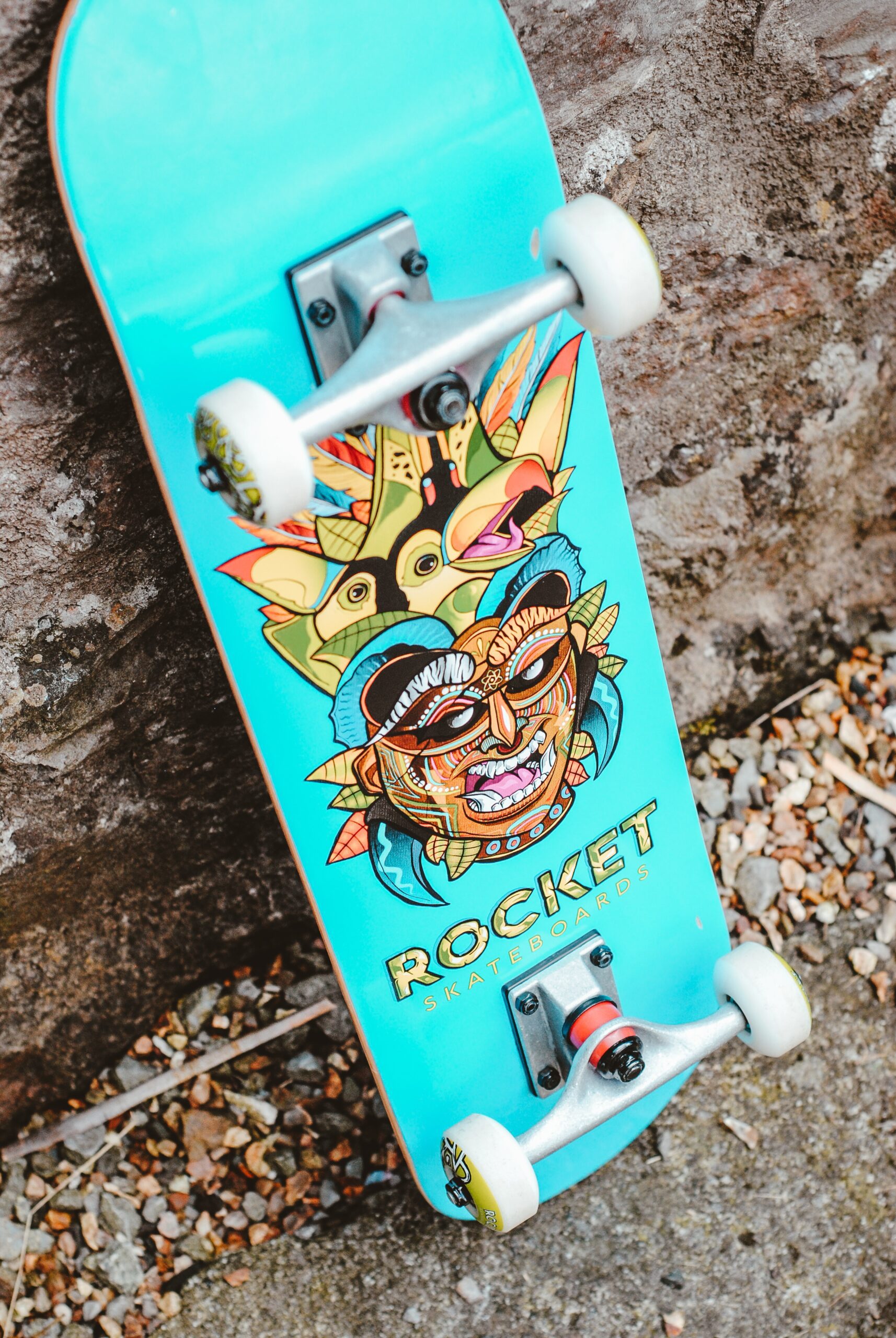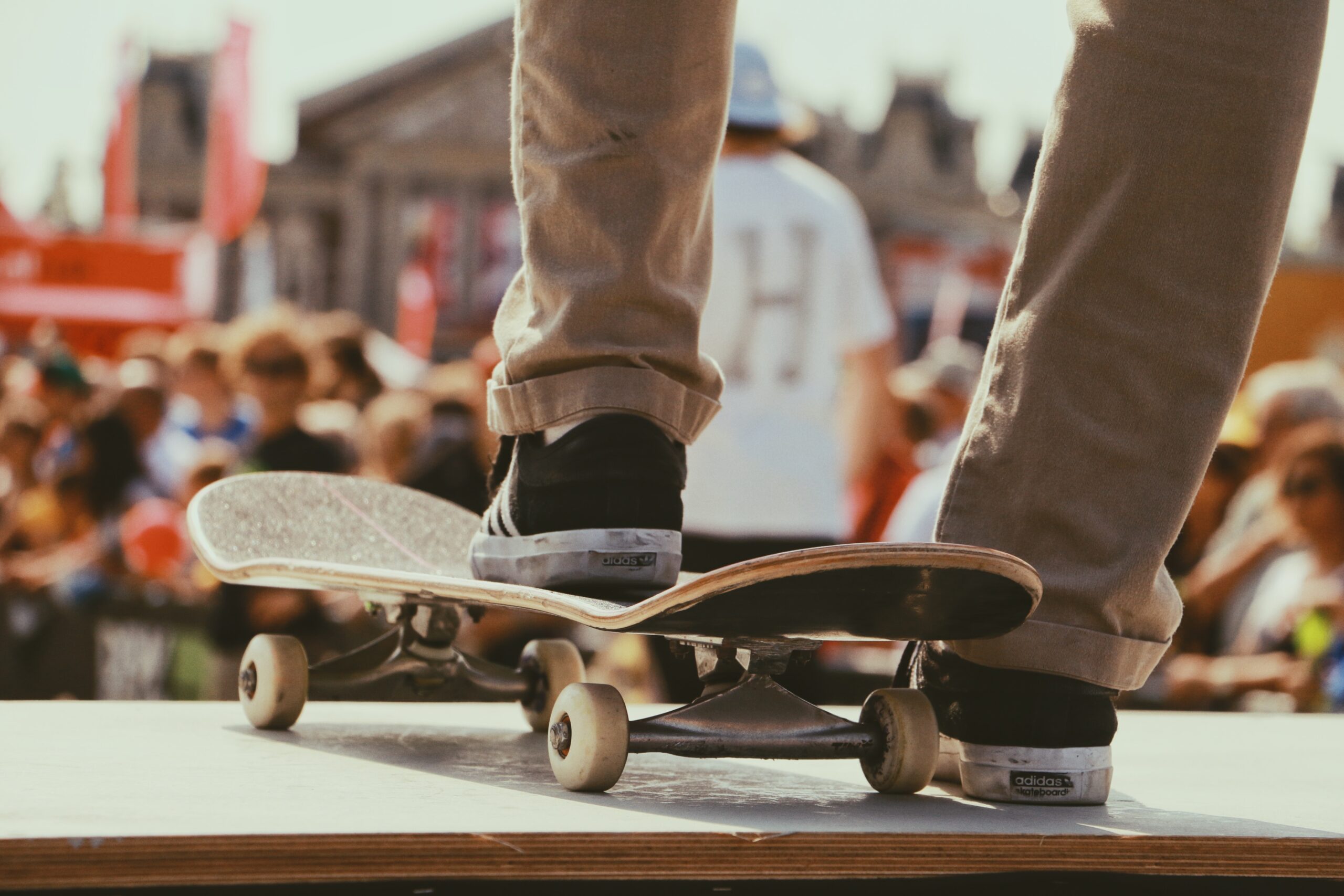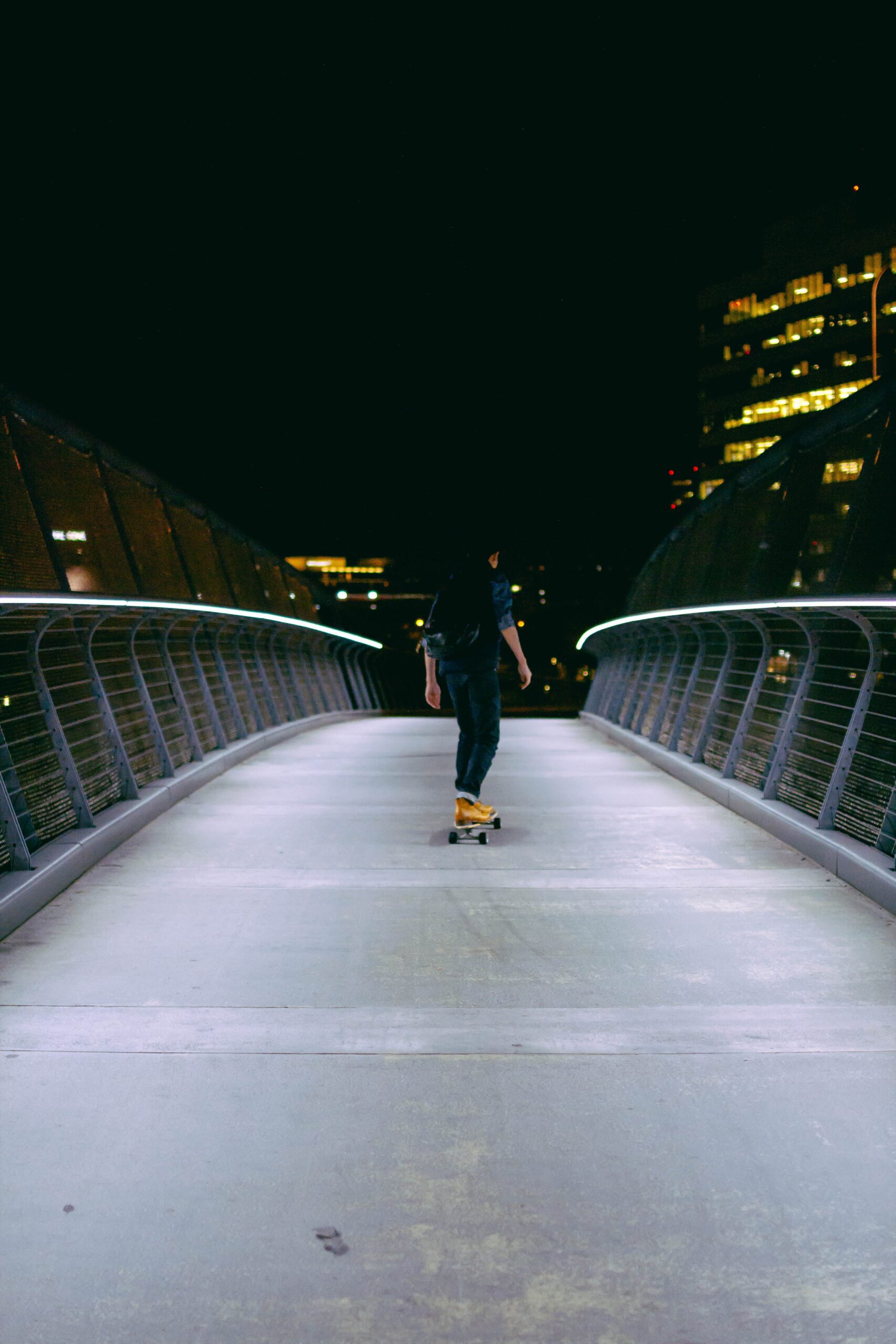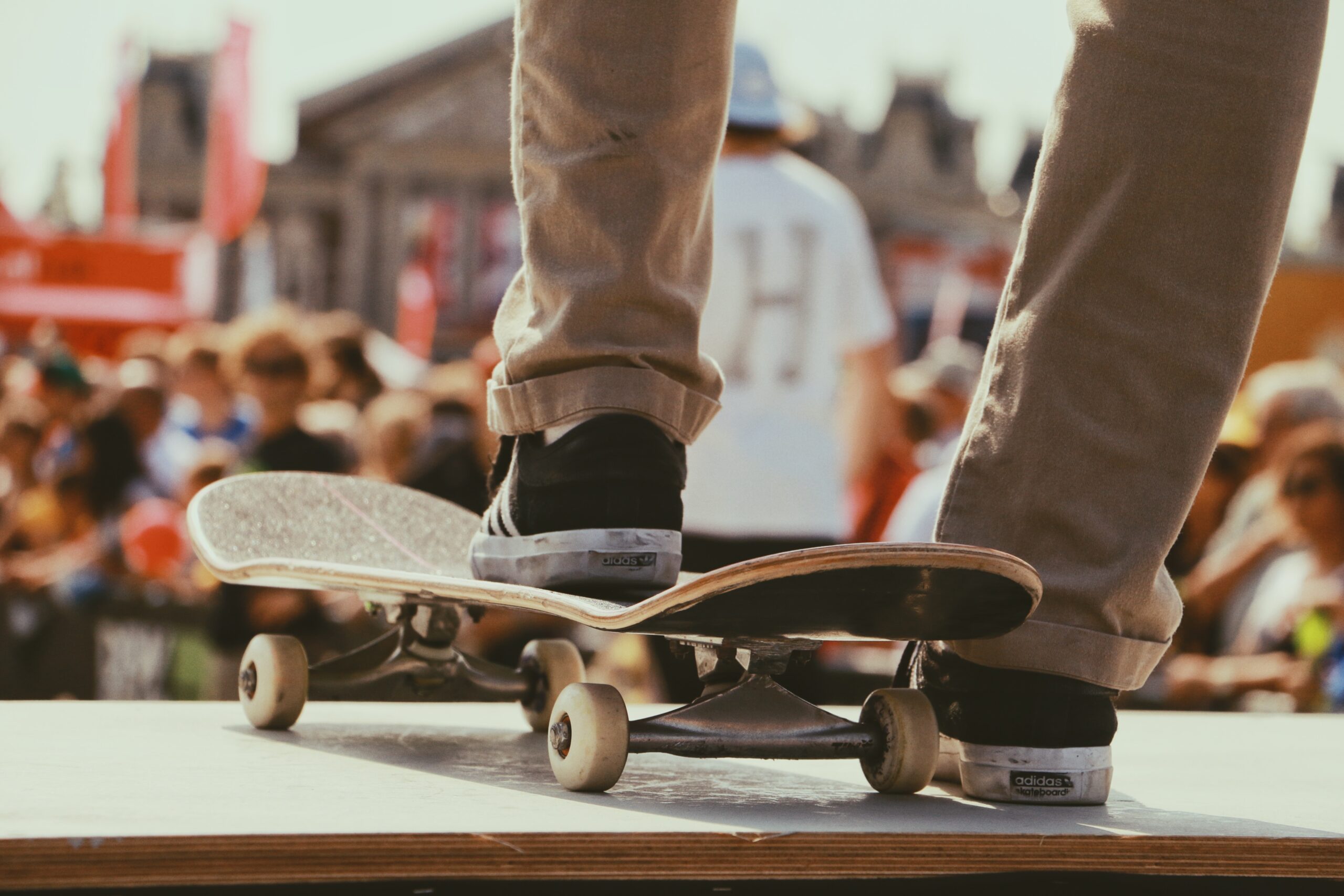Do you want to take your skateboarding skills to the next level and impress your friends with some jaw-dropping tricks? Then it’s time to learn how to master skateboard shuvits, varial flips, and technical flip tricks! These advanced maneuvers require precision and control, but with the right technique and practice, you’ll soon be landing them effortlessly. In this article, we’ll break down the step-by-step process of each trick and provide valuable tips to help you master them like a pro. So grab your board, get ready to push your limits, and let’s dive into the world of skateboard flip tricks!
Understanding the Basics of Skateboarding
Skateboarding is an exhilarating sport that requires a good understanding of the basics before attempting more advanced tricks. To get started, you need to become familiar with your skateboard, understand your balance and stance, and learn how to ride and turn.
Getting familiar with your skateboard
Before attempting any tricks, it’s essential to get familiar with your skateboard. Take the time to explore its components – the deck, trucks, wheels, and bearings. Get comfortable standing on it and find the optimal position for your feet.
Understanding your balance and stance
Maintaining balance is crucial in skateboarding. Find your natural stance, whether it’s regular (left foot forward) or goofy (right foot forward), and ensure that your weight is evenly distributed. Practice shifting your weight and finding your center of gravity to improve your balance.
Learning how to ride and turn
Once you’re comfortable balancing on your skateboard, it’s time to learn how to ride and turn. Start by pushing off with one foot while keeping the other foot on the board. As you gain momentum, practice making small turns by shifting your weight and using your toes and heels to guide the board.
Mastering Shuvits
Shuvits are a fundamental trick in skateboarding that involves rotating the board without flipping it. To master this trick, you need to understand the mechanics and learn the correct foot placement and technique.
What is a shuvit?
A shuvit is a trick where the skateboarder uses their back foot to pop the tail of the board, causing it to rotate while remaining flat. Unlike a kickflip or a heelflip, the board does not flip in a shuvit.
Getting the right foot placement
To perform a shuvit, start by placing your back foot on the tail of the skateboard and your front foot near or on the bolts of the front truck. This foot placement will give you control and leverage to execute the trick effectively.
Popping the board with your back foot
To initiate the shuvit, pop the tail of the skateboard with your back foot. Apply downward pressure and quickly slide your foot towards the heel edge of the board.
Using your front foot to guide the rotation
Simultaneously with the pop, use your front foot to guide the rotation of the board. Drag your toes or kick outward to direct the board’s rotation in the desired direction.
Landing the shuvit
To land the shuvit, keep your eyes on the board and prepare to catch it with both feet. As the board completes the rotation, align your feet with the grip tape and absorb the impact by bending your knees.

Achieving Varial Flips
Varial flips combine a shuvit with a kickflip, resulting in a trick that adds an extra level of complexity and style. Here’s how you can achieve the varial flip and land it consistently.
What is a varial flip?
A varial flip, also known as a kickflip shuvit, is a trick where the skateboarder combines the rotational motion of a shuvit with the flipping motion of a kickflip. This results in the board rotating and flipping simultaneously.
Setting up your feet
Just like in a kickflip, place your back foot with the ball of your foot on the tail and your toes angled slightly towards the heel edge. For the front foot, position it on or slightly below the bolts of the front truck, with the toes pointing diagonally towards the nose.
Popping the board and flicking with your front foot
Similar to a kickflip, pop the tail with your back foot while simultaneously dragging your front foot towards the edge of the nose. As the board flips, use the side of your front foot to flick it and provide the necessary rotation.
Spinning the board with your back foot
While the board is in the flipping motion, use your back foot to guide the shuvit rotation. As you flick the board with your front foot, start rotating your back foot in the desired direction, similar to a shuvit.
Catch and land the varial flip
As the board completes its rotation and flip, keep your eyes on it and anticipate catching it with both feet. Ensure that your feet are positioned correctly on the grip tape and absorb the impact by bending your knees upon landing.
Learning Technical Flip Tricks
Technical flip tricks require precise footwork, timing, and control. While they may seem challenging at first, with practice and dedication, you can improve your kickflip and heelflip skills and eventually learn tricks like the 360 flip and hardflip.
Improving your kickflip and heelflip skills
Before attempting more technical flip tricks, it’s crucial to have a solid foundation in kickflips and heelflips. Practice these fundamental tricks to refine your foot placement, flicking motion, and catch.
Understanding the mechanics of technical flip tricks
Technical flip tricks involve combining rotational and flipping motions. Each trick has its own distinct foot placement, pop, flick, and catch. Take the time to study and understand the mechanics of each trick before attempting them.
Practicing the 360 flip
The 360 flip, also known as a tre flip, is a technical trick that requires a combination of a kickflip and a 360 shuvit. Start by setting up your feet in a kickflip position and execute the kickflip motion while simultaneously performing a 360 shuvit rotation.
Mastering the hardflip
The hardflip is another advanced trick that combines a kickflip with a frontside pop shove-it. Begin with a kickflip foot placement and initiate the kickflip motion while simultaneously rotating the board with a frontside pop shove-it.
Exploring other technical flip tricks
Once you feel confident with tricks like the 360 flip and hardflip, you can explore a wide variety of other technical flip tricks. Some popular options include varial heels, inward heels, laser flips, and double flips. Experiment, practice, and find tricks that resonate with your style.

Building Skateboarding Skills
Improving your skateboarding skills requires consistent practice, dedication, and a willingness to challenge yourself. Here are some tips to help you build your skills and progress as a skateboarder.
Developing your balance and control
Balance is the foundation of skateboarding. Practice maintaining your balance by shifting your weight, performing balance exercises, and riding different surfaces. Focus on controlling your movements and board to improve your overall balance.
Practicing regularly and staying persistent
To build your skills, it’s crucial to practice regularly. Dedicate time to skateboarding each week, and challenge yourself to try new tricks or improve on existing ones. Be persistent and don’t get discouraged by failures. With time, you’ll see progress.
Utilizing skateparks and obstacles
Skateparks and obstacles offer a controlled environment for practicing and refining your skills. Take advantage of the different ramps, rails, and ledges available to enhance your skateboarding abilities. Start with smaller obstacles and gradually progress to more challenging ones.
Seeking guidance from experienced skateboarders
Skateboarding is a community-driven sport where experienced skateboarders are often more than happy to share their knowledge. Seek guidance from experienced individuals who can provide tips, pointers, and insights. Learning from others can accelerate your progress as a skateboarder.
Experimenting and adding your personal style
Skateboarding is an art form that allows for personal expression. Don’t be afraid to experiment with different tricks, variations, and combinations. Embrace your own style and add your unique touch to each trick. This creative aspect is what makes skateboarding truly special.
Maintaining Safety and Injury Prevention
Skateboarding involves inherent risks, and it’s crucial to prioritize safety and injury prevention. By following these guidelines, you can minimize the chances of accidents and injuries.
Wearing appropriate protective gear
Protective gear, such as a helmet, knee pads, elbow pads, and wrist guards, is essential for skateboarding. By wearing the appropriate protective gear, you reduce the risk of head injuries, fractures, and abrasions.
Stretching and warming up before skateboarding
Before skateboarding, it’s important to warm up your muscles and stretch to prevent injuries. Perform dynamic stretches that target the muscles used in skateboarding, such as leg swings, arm circles, and ankle rotations.
Avoiding risky maneuvers without proper skills
Push yourself, but don’t attempt tricks or maneuvers beyond your skill level. Gradually progress and develop the necessary skills and control before attempting risky maneuvers. Trying tricks without proper technique and skill can lead to unnecessary injuries.
Listening to your body and taking breaks
Skateboarding can be physically demanding, and it’s important to listen to your body. Take breaks when you feel fatigued or in pain. Pushing through physical exhaustion can lead to accidents or injuries. Resting and allowing your body to recover is crucial for long-term enjoyment of the sport.
Seeking medical attention for any injuries
In the event of an injury, seek immediate medical attention. Don’t ignore or downplay any pain or discomfort. Prompt medical intervention can help prevent further complications and facilitate a quicker recovery.

Overcoming Challenges and Frustrations
Skateboarding is a challenging sport that requires persistence and the ability to overcome frustrations. Here are some strategies to help you overcome challenges and grow as a skateboarder.
Embracing the learning process and accepting failures
Skateboarding is a learning process, and it’s important to embrace this journey. Be patient with yourself, and remember that failures are a part of the process. Each failure brings you closer to success as you learn from your mistakes.
Breaking down tricks into smaller components
When faced with a challenging trick, break it down into smaller components. Focus on mastering each individual motion or technique before putting them together. By taking it step by step, you’ll build a solid foundation and increase your chances of success.
Visualizing and mentally preparing for tricks
Visualization is a powerful tool in skateboarding. Before attempting a trick, visualize yourself successfully executing it. Imagine every detail, from foot placement to body movements. This mental preparation can boost your confidence and improve your overall performance.
Seeking feedback and guidance from fellow skateboarders
Skateboarding is a community-based sport, and seeking feedback and guidance from fellow skateboarders can provide valuable insights. Share your progress, ask for advice, and learn from their experiences. Their feedback can help you refine your techniques and overcome challenges.
Staying motivated and persevering through challenges
Skateboarding can be both physically and mentally demanding, but staying motivated is key to progress. Set goals for yourself, celebrate small victories, and stay committed to your skateboarding journey. Remember why you started skateboarding and let that drive you to persevere through challenges.
Resources and Additional Learning
Skateboarding is a constantly evolving sport, and there are various resources available to enhance your learning experience. Explore these resources to further expand your skateboarding knowledge.
Online tutorials and instructional videos
The internet is filled with countless tutorials and instructional videos on skateboarding. Utilize platforms like YouTube to access a wide range of resources that cover everything from basic tricks to advanced maneuvers. Take advantage of online tutorials to learn new tricks and refine your skills.
Skateboarding communities and forums
Engaging with skateboarding communities and forums allows you to connect with like-minded individuals and access valuable information. Join online communities or local skateboarding groups to share experiences, ask questions, and learn from experienced skateboarders.
Books and magazines about skateboarding tricks
Books and magazines focused on skateboarding tricks offer in-depth knowledge and insights. Explore titles such as “The Skateboard Trick Bible” by Robbie Kirkland or “Skateboarding: New Levels, Tips and Tricks” by Evan Goodfellow to gain a deeper understanding of different tricks and techniques.
Professional skateboarders and their tutorials
Many professional skateboarders share their knowledge and expertise through tutorials and instructional videos. Follow professional skateboarders on social media platforms and watch their tutorials to learn from the best in the industry. Their guidance can help you hone your skills and develop your own style.
Skateboarding lessons and camps
Consider taking skateboarding lessons or attending skateboarding camps to accelerate your progress. Professional instructors can provide personalized guidance, correct any mistakes in your technique, and help you progress more rapidly. Look for local skateboarding schools or camps in your area.

Embracing Creativity and Personal Style
Skateboarding is not just about mastering tricks; it’s also about embracing creativity and developing your own personal style. Here’s how you can add your own unique flair to your skateboarding journey.
Experimenting with different variations and combinations
Skateboarding is all about experimentation and pushing the boundaries. Try different variations and combinations of tricks to create something new. Combine tricks you’ve learned, modify foot placements, or add your own twists to existing tricks.
Developing your own unique tricks
Developing your own unique tricks is a great way to stand out as a skateboarder. Embrace your creativity and think outside the box. As you gain experience and confidence, experiment with different movements and motions to create tricks that are entirely your own.
Incorporating different elements of skateboarding
Skateboarding encompasses various elements, from street skating to ramp riding and even downhill racing. Explore different aspects of skateboarding and incorporate those elements into your own style. This versatility will enhance your skill set and make your skateboarding more diverse.
Expressing creativity through body movements
Skateboarding is not just about the board; it’s also about the rider. Express your creativity through your body movements, body position, and overall style. Add flair to your tricks with stylish arm movements, unique body rotations, or creative grabs.
Inspiring and getting inspired by other skateboarders
Skateboarding is a community filled with talented individuals. Be inspired by other skateboarders and their unique styles. Watch videos, attend events, and take part in sessions with fellow skateboarders. Observing and interacting with others can ignite your own creativity and motivate you to push your limits.
Participating in Skateboarding Events and Competitions
Participating in skateboarding events and competitions can be a rewarding experience that allows you to showcase your skills, connect with the skateboarding community, and measure your progress. Here’s how you can get involved in these exciting opportunities.
Locating skateboarding events and competitions
To find skateboarding events and competitions, start by checking local skateboarding websites, social media groups, and community notice boards. These platforms often share information about upcoming events, including dates, locations, and registration details.
Registering and preparing for competitions
Once you’ve found a competition you’d like to participate in, follow the registration instructions provided. Make sure to complete any necessary forms, pay any entry fees, and meet any requirements, such as age or skill level. Practice your chosen tricks leading up to the competition to ensure you’re prepared.
Engaging with the skateboarding community
Participating in events and competitions is not just about showcasing your skills; it’s also an opportunity to connect with the skateboarding community. Engage with other participants, share experiences, and build relationships. The skateboarding community is welcoming and supportive, so embrace the sense of camaraderie.
Gaining exposure and recognition
Competitions allow you to gain exposure and recognition within the skateboarding community. Perform your best tricks, showcase your unique style, and leave a lasting impression. Even if you don’t win, the experience gained and connections made can open doors to future opportunities.
Setting goals and measuring progress
Competing in skateboarding events and competitions provides a tangible way to set goals and measure your progress. Strive to improve your scores, achieve higher rankings, or perform new tricks. Use each competition as a stepping stone towards your personal skateboarding goals.
By understanding the basics of skateboarding, mastering tricks like shuvits and varial flips, learning technical flip tricks, building your overall skills, prioritizing safety, embracing challenges and frustrations, exploring resources, embracing creativity, and participating in events and competitions, you can take your skateboarding to new heights. Remember, practice is key, and with dedication and perseverance, you can become a skilled and confident skateboarder. Enjoy the journey and have fun exploring the wonderful world of skateboarding!


